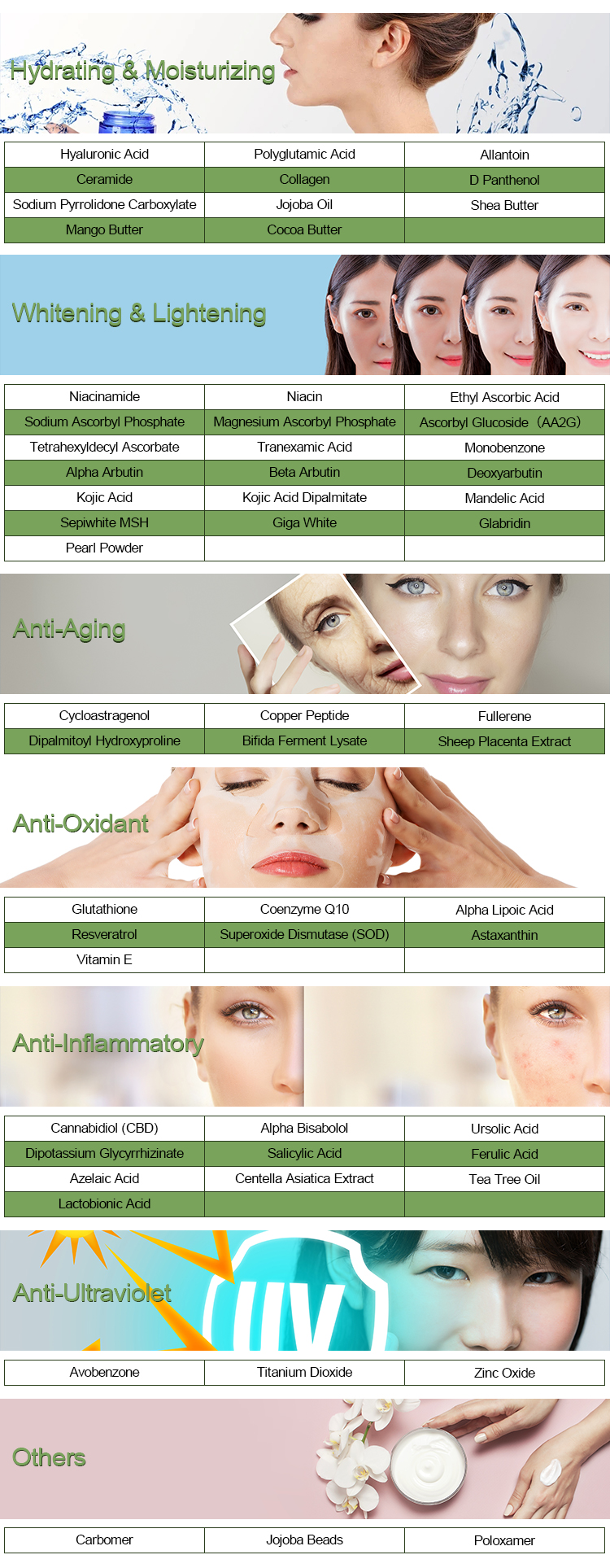As of my last update in September 2021, Beta Arbutin is a popular ingredient in skincare products known for its skin-lightening and brightening effects. It is a synthetic form of arbutin, a naturally occurring compound found in certain plants like bearberry, blueberry, and cranberry. Beta Arbutin is often used in cosmetic formulations due to its potential to inhibit the production of melanin, the pigment responsible for the color of our skin, hair, and eyes. Here’s an overview of its efficacy and effects:

- Skin lightening: Beta Arbutin is believed to be effective in lightening dark spots, freckles, and hyperpigmentation by reducing the activity of the enzyme tyrosinase, which plays a crucial role in melanin synthesis.
- Skin brightening: Along with its skin-lightening properties, Beta Arbutin can also promote a more radiant and even skin tone by reducing the appearance of dullness and discoloration.
- Safety: Beta Arbutin is generally considered safe for topical use when used at appropriate concentrations. However, as with any skincare ingredient, some individuals may experience skin irritation or allergic reactions. It’s essential to do a patch test before using products containing Beta Arbutin to ensure there are no adverse reactions.
- Gradual results: The effects of Beta Arbutin on the skin can take time to manifest fully. Users may need to use products containing Beta Arbutin consistently over several weeks or months to see noticeable improvements in skin tone and hyperpigmentation.
- Combination with other ingredients: Some skincare products combine Beta Arbutin with other active ingredients like Vitamin C, Vitamin E, or niacinamide, which can enhance its overall efficacy and provide additional skin benefits.
- Sun protection: Since hyperpigmentation and skin discoloration are often worsened by sun exposure, using products with Beta Arbutin should be complemented with proper sun protection, such as wearing sunscreen daily.
It’s worth noting that scientific research on the efficacy and long-term effects of Beta Arbutin is still ongoing, and individual results may vary. If you are considering using Beta Arbutin or any new skincare product, it’s always a good idea to consult with a dermatologist or skincare professional to ensure it’s suitable for your skin type and concerns. Additionally, keep in mind that there may have been further developments or research conducted on Beta Arbutin since my last update in September 2021.
Beta Arbutin application
Beta arbutin is a natural compound derived from plants, primarily bearberry, cranberry, and blueberry. It is a glycoside of hydroquinone and is often used in skincare products due to its potential skin-brightening and lightening properties. Beta arbutin works by inhibiting the production of melanin in the skin, which can help reduce the appearance of dark spots, hyperpigmentation, and even out skin tone.
When using beta arbutin in your skincare routine, here are some tips for application:
- Patch Test: Before applying beta arbutin to your entire face, perform a patch test on a small area of your skin to check for any adverse reactions or allergies.
- Cleanse: Start with a clean and dry face. Use a gentle cleanser to remove any makeup, dirt, or impurities.
- Toner: Optionally, you can apply a toner to balance the pH level of your skin and prepare it for better absorption of the beta arbutin.
- Apply Beta Arbutin: Follow the instructions on the product label. Generally, a small amount of beta arbutin serum or cream is applied to the affected areas or the entire face, depending on your skincare concerns. Gently massage it into your skin using upward and outward motions.
- Wait for Absorption: Allow the product to fully absorb into your skin before applying any other products. This may take a few minutes.

- Follow with Moisturizer: After the beta arbutin has absorbed, apply your regular moisturizer to lock in hydration.
- Sunscreen: Beta arbutin can increase skin sensitivity to the sun, so it’s crucial to apply sunscreen with at least SPF 30 before heading outdoors to protect your skin from further hyperpigmentation and sun damage.
- Frequency: Follow the recommended usage instructions on the product label or consult with a dermatologist if you’re unsure about how often to use beta arbutin based on your skin type and concerns.
- Patience: It may take several weeks or even months of consistent use to see noticeable results, depending on the severity of the hyperpigmentation or dark spots.
Remember that while beta arbutin can be effective in addressing some skin concerns, it’s essential to have realistic expectations and understand that individual results may vary. If you have specific skin conditions or concerns, consider consulting with a dermatologist before incorporating any new product into your skincare routine.
